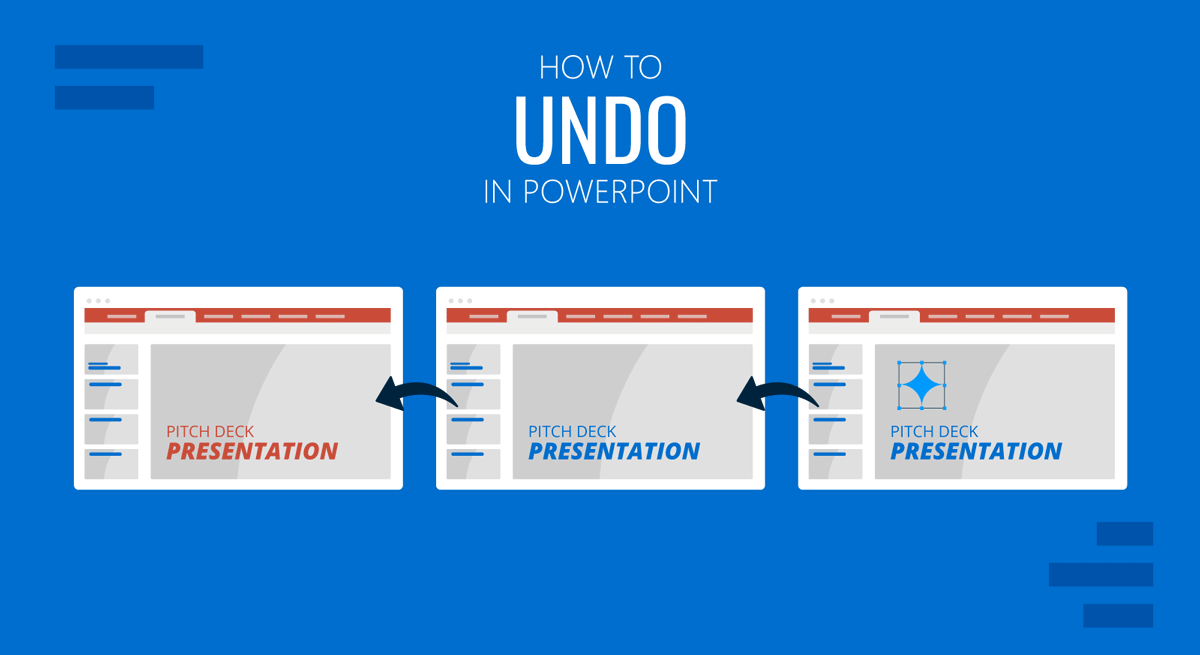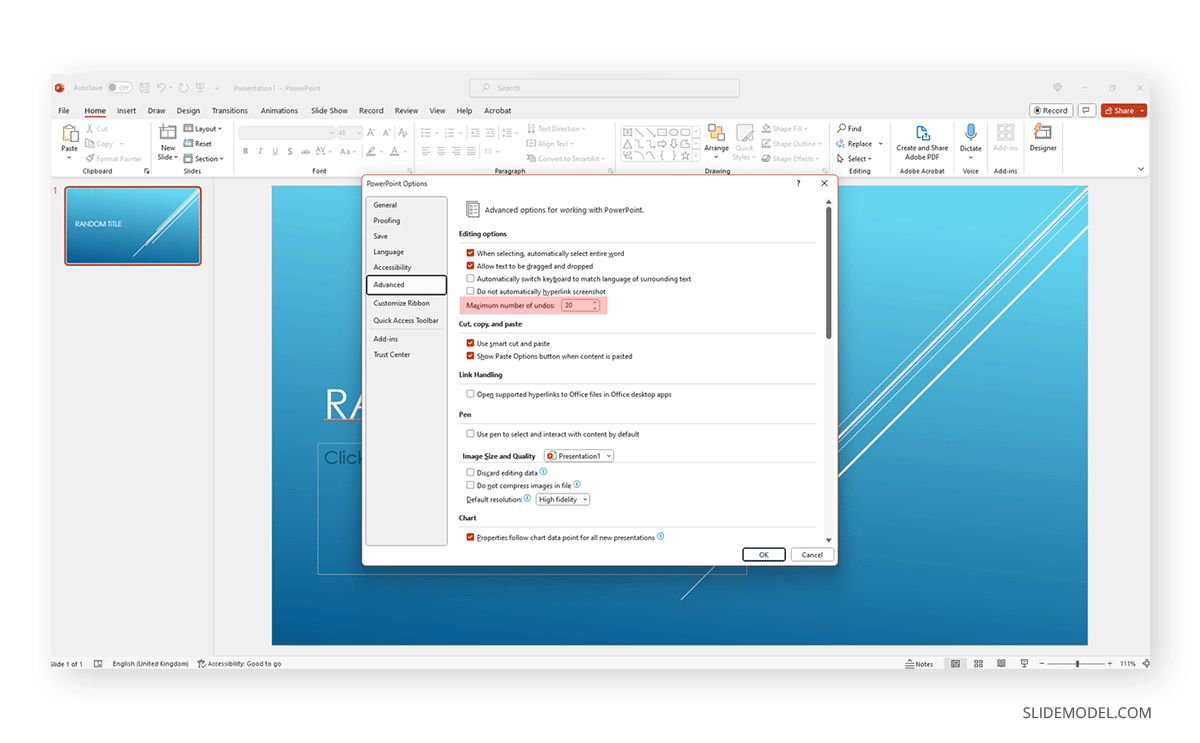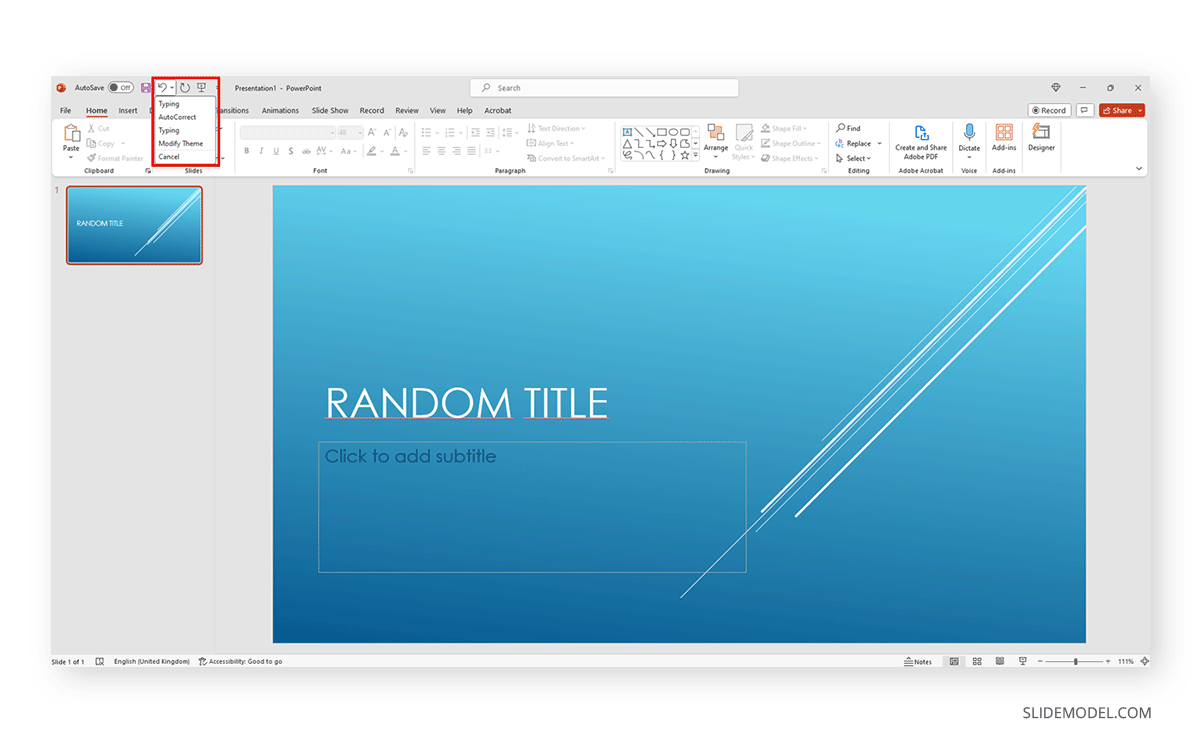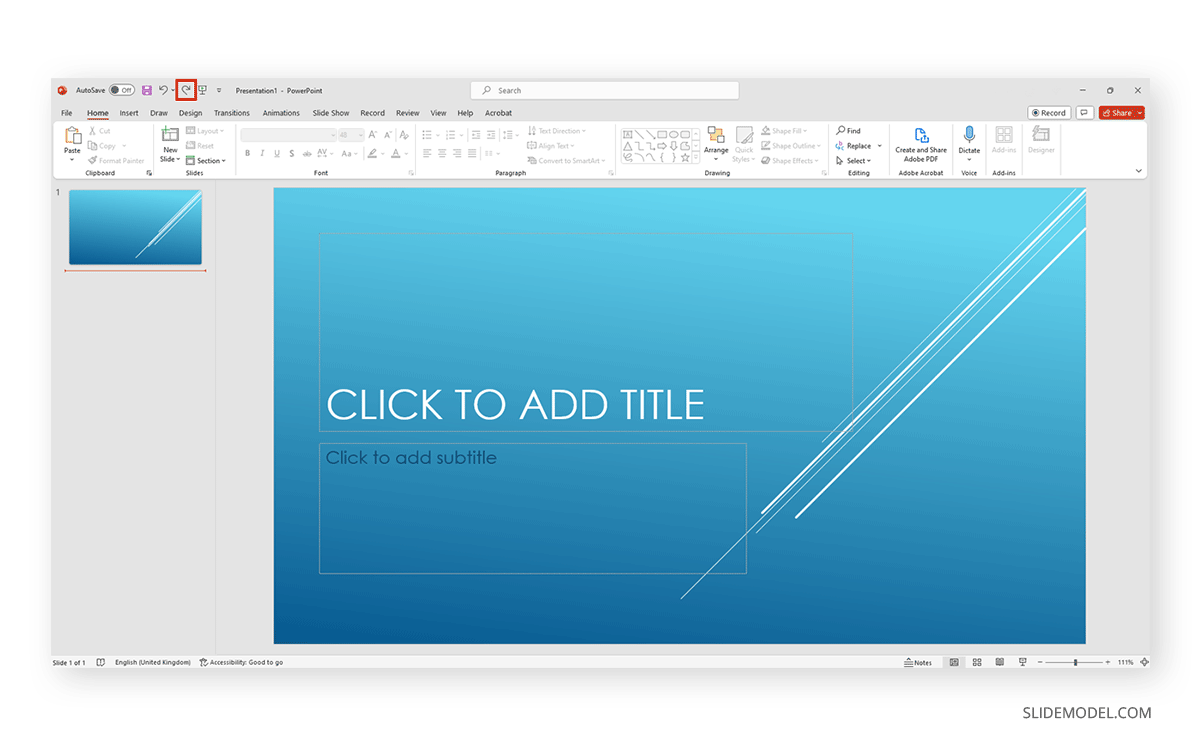
Anyone can make mistakes, and rather than starting from scratch, we can easily learn how to undo in PowerPoint to get back to the previous stage we were working on. The undo feature in PowerPoint can be accessed through two different methods, which we shall explain in this guide.
How to Undo in PowerPoint via Shortcut
The first method is also the quickest once you gain mastery of PowerPoint shortcuts. To undo any kind of action, like editing text, working with shapes, format options, and so on, just hit this keystroke combination: CTRL + Z (For Mac users, CMD + Z).
That will revert the change you just made, and you can repeat this keyboard shortcut 20 times. After that, if you didn’t save the document before, you won’t be able to revert without losing all changes. There’s an alternative method to prevent this from happening.
We can work with the PowerPoint configurations to increase the maximum count of undo in PowerPoint. To access that option, go to File > Options > Advanced. Locate the Maximum number of undos option, and increase the value. The maximum allowed value is 150 – please beware that increasing that number implies more RAM allocation for PowerPoint when running to preserve the previous states of your file. As a result, unexpected crashes may happen, but the most common outcome is PowerPoint running slower.

How to Undo in PowerPoint via Top Menu
Another option we have is to undo from the top menu in PowerPoint. This can be accessed by clicking the circular arrow pointing to the left.

If we click on the tiny arrow next to it, you open the history of undos available in PowerPoint. You can select any action you want to undo, which saves time instead of going one by one (remember, all changes made after the point you selected will be undone.

How to Redo in PowerPoint
We’ve seen how to undo in PowerPoint via two methods. Well, you can redo the changes by applying the opposite of each of those methods. Let’s see them in detail.
To redo via shortcut in PowerPoint, you need to hit the keyboard shortcut CTRL + Y (CMD + Y for Mac Users). To undo in PowerPoint via the Top Menu, click on the curved arrow pointing to the right.

FAQ’s
What is the shortcut for undoing an action in PowerPoint?
To undo an action in PowerPoint, use the shortcut CTRL + Z on Windows or CMD + Z on Mac.
How many times can I undo actions in PowerPoint using the shortcut?
By default, the CTRL + Z (or CMD + Z on Mac) shortcut allows you to undo up to 20 actions. This number can be increased through PowerPoint settings.
Can I increase the number of undo actions in PowerPoint?
Yes, you can increase the number of undo actions in PowerPoint:
– Go to File > Options > Advanced.
– Locate the Maximum number of undos option.
– Increase the value (up to a maximum of 150).
What is the potential downside of increasing the maximum number of undos in PowerPoint?
Increasing the maximum number of undos allocates more RAM to PowerPoint, which may result in slower performance or unexpected crashes, especially in legacy hardware.
How do I undo an action using the PowerPoint top menu?
To undo an action using the top menu:
– Click the circular arrow pointing to the left in the top menu.
– Alternatively, click the tiny arrow next to it to open the undo history and select a specific action to undo.
What is the purpose of the undo history in PowerPoint?
The undo history allows you to view and select specific actions to undo, saving time by reverting multiple actions at once instead of one by one.
How do I redo an action in PowerPoint using a shortcut?
To redo an action in PowerPoint, use the shortcut CTRL + Y on Windows or CMD + Y on Mac.
How do I redo an action using the PowerPoint top menu?
To redo an action using the top menu, click the curved arrow pointing to the right in the top menu.
What should I do if I reach the undo limit and need to revert more actions?
If you reach the undo limit, you cannot revert more actions unless you increase the undo limit in the settings or manually revert the changes made.
Can undoing actions affect the saved state of my PowerPoint file?
Yes, undoing actions will revert changes made since the last save. If you undo changes and then save the file, the undone actions will not be recoverable unless you redo them before saving.
What happens if I close PowerPoint and reopen it after undoing actions?
If you close PowerPoint and reopen it, the undo history is cleared. You can only undo actions made after reopening the file.
How can I ensure I don’t lose important changes when using the undo feature in PowerPoint?
To avoid losing important changes, save your work frequently. This allows you to revert to a saved state if you need to undo multiple actions.
Final Words
And that’s all. It’s something pretty straightforward to master, guaranteeing a safer working environment for your presentations. We highly advise you to opt for the shortcut version as it’s faster.


